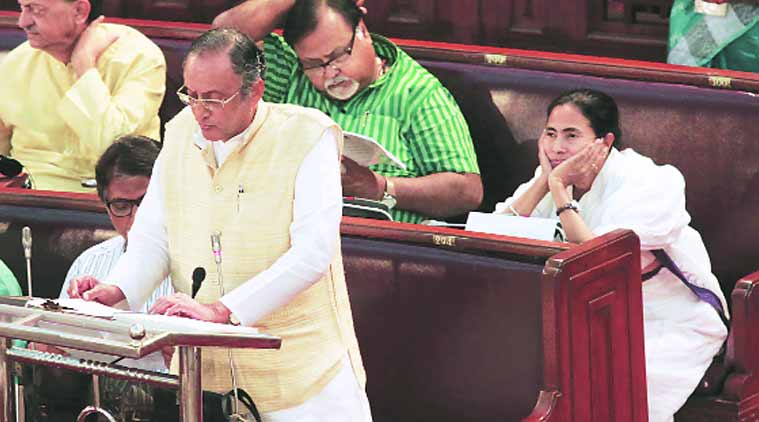- India
- International
Provider to facilitator
After nine months of tinkering, with this budget, the government has begun institutional change. Yet, reneging on the promised fiscal consolidation is a problem.
 The government will argue that the higher deficit will be used to fund ‘productive’ investment, not ‘wasteful’ consumption.
The government will argue that the higher deficit will be used to fund ‘productive’ investment, not ‘wasteful’ consumption.
Economists often separate the near term from the long run. It is a useful analytical device to think about policies and reforms. In reality, there is no such separation
(we are yet to master the skill of holding time still). The long term is just the sum of short-term events. What we do now inextricably affects the future. So, by conflating what can be done analytically with what is possible in reality, the FY16 budget’s promised transformational reforms could well become hostage to how long India’s luck with macroeconomic tailwinds will last.
This government was voted to power to bring about a transformational change in the economy. After nine months of tinkering and hesitancy, the government appears to have begun, with this budget, to bring about the kind of institutional change that is needed to transform India. Amending the central banking act to formalise inflation-targeting as the sole objective of monetary policy will finally anchor medium-term inflation expectations and institutionalise stability as the focus of overall macroeconomic policy.
If fiscal policy turns wayward, monetary policy will have to be tightened to keep inflation down. Setting up an independent debt management office may appear esoteric, but it is critical for monetary policy independence. While businesses routinely bemoan the high cost of entry, an often overlooked component of the ease of doing business is the cost of exit. By promising to formulate a bankruptcy law and introduce public dispute resolution mechanisms, the budget has taken a major step in reducing
the cost of business. A key binding constraint to growth today is the excessive risk borne by the private sector in PPP projects. Promising to review the PPP framework is much needed. The increased devolution of taxes to states, especially as funds untied to Central government projects, will provide them with the resources and independence to meet state-specific needs, and not those mandated by New Delhi.

All these are key elements of transforming the government from being the provider to being the facilitator of growth. But such changes bring with them increased anxiety over employment and income at the individual level. This requires expanding India’s inadequate social safety net. The increased tax incentives for encouraging long-term retirement savings, increasing health insurance, the rolling out of a minimum universal social security scheme and continuing with the MGNREGA (however faulty) will help mitigate the rise in uncertainty.
While these changes promise to transform the economic landscape, they will take time to become effective. So what should one do in the interim, that is, in the near term? History suggests that one should create as much fiscal space as possible to buffer the economy from unexpected shocks during this transitional period, especially as the global headwinds of yesteryears have turned into tailwinds now — developed markets are recovering, while oil prices are expected to remain benign with much easier global financial conditions. Officially, India is humming along at 7.5 per cent growth. Even if one doesn’t quite feel it, it is evident that the economy is already healing, such that there is no macroeconomic reason to provide any fiscal stimulus.
Yet, the government did exactly that. Instead of providing more fiscal certainty, the budget needlessly exacerbated the risks around India’s Achilles’ heel. Here is some simple, albeit caricatured, arithmetic to make the point. FY15’s deficit is slated to be 4.1 per cent of GDP. Suppose policymakers went on strike this year. Then, the FY16 budget would have had to run on the same appropriations and tax policies as in FY15. This would presumably lower growth to, say, a nominal rate of 10 per cent rather than the 11.5 per cent assumed by the government. In that case, FY16’s deficit would have been 3.7 per cent of GDP, just a tad over the previous target of 3.6 per cent. But then, the decline in global crude prices and the higher excise taxes on petroleum products imposed in FY15 have created a windfall fiscal gain of 0.7 per cent of GDP. Consequently, if nothing was done, the FY16 deficit would have been 3 per cent of GDP.
Instead, the government raised the deficit to 3.9 per cent of GDP by spending more, exactly what was done in FY11 out of the windfall gains from the 3G licence sale. And see where it got us two years later. When all of India’s fiscal metrics are worse than its ratings peers and when profligate fiscal policy nearly caused a crisis just two years ago, reneging on the promised fiscal consolidation path is a big thing. Of course, the government this time will justify it by arguing that the higher deficit will be used to fund “productive” investment, and not “wasteful” consumption. The problem is that it is hard to find any convincing evidence, either in India or elsewhere, that a one-off injection of public investment increases medium-term growth. The only effect it has is to raise growth in the year the spending occurs, which is exactly what one would expect if social spending or the wages of civil servants were raised. Importantly, regardless of the nature of the fiscal stimulus, resource prices are inevitably pushed up. With the RBI now expected to formally keep inflation below 6 per cent, what room does this provide for further monetary easing? What space does this provide if oil prices were to go back up or if the revenue and disinvestment projections falter? And what happens to the promised institutional reforms if India has to face increased macroeconomic uncertainty with no policy room to manoeuvre?
The binding constraints holding back corporate investment are environmental laws, the land acquisition framework, the structure of PPP projects and the high indebtedness of infrastructure companies (the counterpart of which lies in the high stock of restructured and non-performing loans among PSU banks). It is not the lack of public investment. If the government truly wanted to support private investment in the near term with a higher deficit, it would have backed its planned medium-term institutional reforms with increased contribution to stalled PPP projects and raising PSU bank recapitalisation to restart credit flow, instead of planning to build more infrastructure that may or may not happen, and reduce recapitalisation funds. That would, at least, have been consistent with being the facilitator and not the provider of growth.
The writer is chief Asia economist, J.P. Morgan. Views are personal.
40 Years Ago
EXPRESS OPINION
More Explained
Apr 18: Latest News
- 01
- 02
- 03
- 04
- 05









































